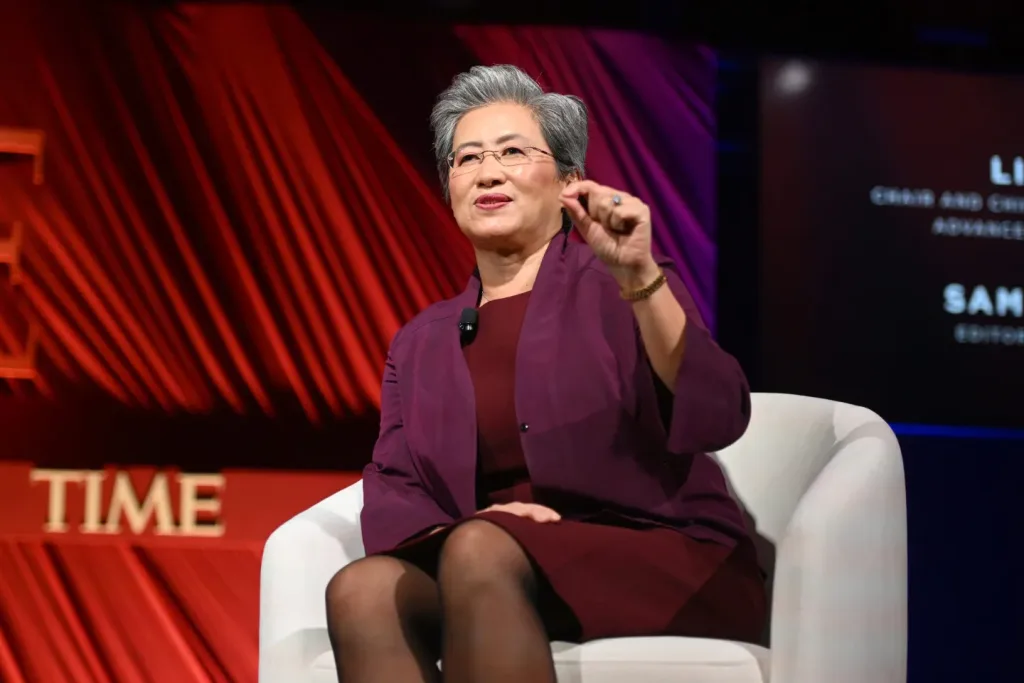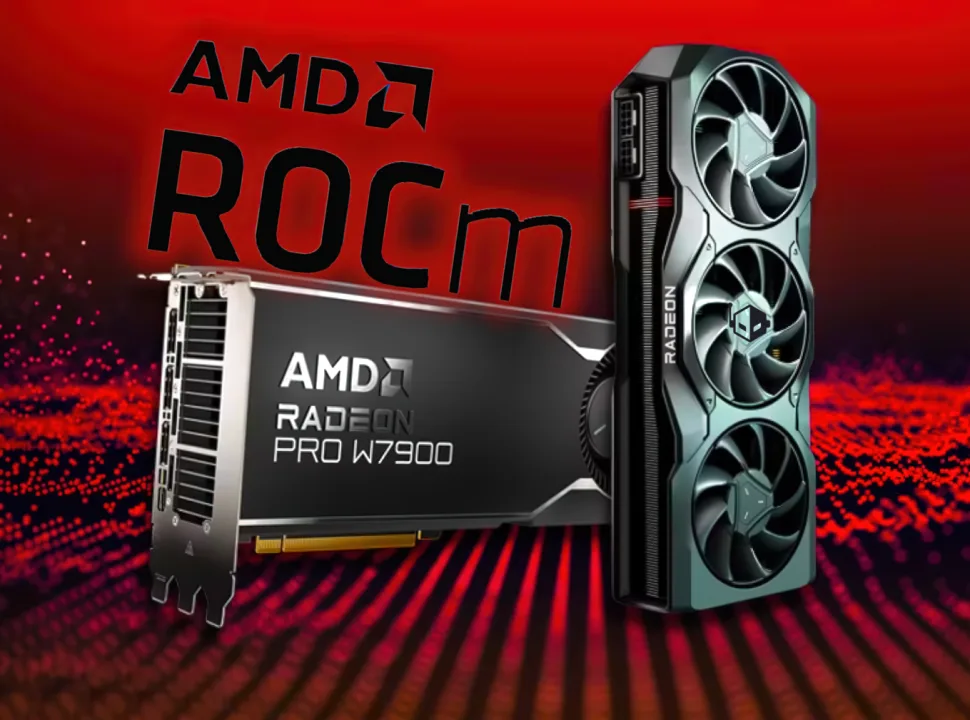In the high-stakes chess game that is the AI hardware industry, AMD just made a bold queen’s gambit.
On March 31, 2025, as tech giants were busy positioning themselves for dominance in the exploding AI infrastructure market, AMD (NASDAQ: AMD) quietly completed a strategic acquisition that could reshape the competitive landscape. By acquiring ZT Systems—a specialized provider of AI and compute infrastructure for the world’s largest cloud providers—AMD has signaled it’s not content playing second fiddle to NVIDIA in the rapidly evolving AI data center arena.
This isn’t just another tech acquisition. It’s a calculated move to create an end-to-end AI powerhouse capable of competing for a slice of what AMD projects will be a staggering $500 billion data center AI accelerator opportunity by 2028.
Table of Contents
AMD’s AI Strategy: Building an End-to-End Ecosystem
For years, AMD has been methodically assembling the pieces of a comprehensive AI strategy. The company’s journey began with high-performance CPUs, expanded into GPUs with RDNA and CDNA architectures, and grew further with the acquisition of Xilinx for programmable chips and Pensando for networking technology.
The ZT Systems acquisition represents the final puzzle piece: expertise in designing and delivering complete rack-scale systems optimized specifically for AI workloads.
“With the rapid pace of innovation in AI, reducing the end-to-end design and deployment time of cluster-level data center AI systems will be a significant competitive advantage for our customers,” explained Forrest Norrod, Executive Vice President and General Manager of AMD’s Data Center Solutions business unit.
This acquisition allows AMD to offer a fully integrated stack:
- AMD EPYC CPUs for general computing
- Instinct GPUs for AI acceleration
- Pensando DPUs for networking
- Open-source ROCm software platform
- And now, ZT Systems’ expertise in large-scale rack integration
The result? A comprehensive solution that can potentially accelerate the design and deployment of AI infrastructure at hyperscale levels—a critical capability as AI models grow exponentially in size and complexity.
Who is ZT Systems and Why They Matter
Unless you work in data center infrastructure, you may not have heard of ZT Systems. Yet, this company has quietly built a reputation as one of the most trusted providers of custom compute solutions for hyperscale cloud providers—the companies running the massive data centers that power our digital lives.
Founded by Frank Zhang, ZT Systems specializes in designing, building, and deploying the exact type of infrastructure needed for today’s demanding AI workloads. Their expertise includes:
- Rack-scale design: Optimizing power, cooling, and density for AI accelerators
- Supply chain management: Critical in today’s constrained hardware environment
- Deployment services: Reducing time-to-operation for complex AI clusters
- Hyperscale relationships: Deep connections with major cloud providers
What makes this acquisition particularly strategic is that ZT Systems already has established relationships with many of the same hyperscale customers AMD is targeting with its AI accelerators. This existing customer base provides AMD with an inside track to compete more effectively against NVIDIA’s dominant AI solutions.
The Leadership Transition
As part of the acquisition, key ZT Systems executives are joining AMD’s leadership team:
- Frank Zhang, ZT Systems’ founder and CEO, joins AMD as Senior Vice President of ZT Manufacturing, reporting to Forrest Norrod. Zhang will help lead the divestiture of the manufacturing business, which AMD plans to sell to strategic partners.
- Doug Huang, former ZT Systems President, becomes AMD’s Senior Vice President of Data Center Platform Engineering. In this role, Huang will lead design and customer enablement teams, working closely with AMD’s Data Center Solutions and AI Group.
These leadership additions bring valuable expertise in system design, customer relationships, and manufacturing—all critical components for AMD’s AI infrastructure strategy.

What This Means for the AI Hardware Market
The implications of this acquisition extend far beyond AMD’s corporate boundaries. Here’s how this move could reshape the competitive landscape:
1. Challenging NVIDIA’s Dominance
NVIDIA currently dominates the AI accelerator market with its GPUs and comprehensive CUDA software ecosystem. AMD’s acquisition of ZT Systems—combined with its growing ROCm software platform—creates a more complete alternative to NVIDIA’s offerings.
By controlling more of the AI infrastructure stack, AMD can optimize performance across silicon, software, and systems—potentially closing the gap with NVIDIA’s highly integrated approach.
2. Accelerating Time-to-Market
In the fast-moving AI landscape, speed is a competitive advantage. ZT Systems’ expertise in system design and deployment could significantly reduce the time required to bring new AMD AI infrastructure to market.
As Norrod emphasized, this acquisition will “offer customers both choice and speed to market, allowing them to invest in key areas where they choose to differentiate their AI offerings.”
3. Strengthening the Open Ecosystem
AMD has consistently championed an open ecosystem approach through initiatives like ROCm, its open-source software platform for GPU computing. The ZT Systems acquisition reinforces this strategy by combining:
- Open-source software (ROCm)
- Industry-standard networking technologies
- ZT Systems’ systems design expertise
This approach contrasts with NVIDIA’s more proprietary CUDA ecosystem, potentially appealing to hyperscale customers seeking greater flexibility and customization options.
Financial Implications and Future Plans
AMD expects the transaction to be accretive on a non-GAAP basis by the end of 2025, suggesting confidence in the immediate value-generation potential of the acquisition.
Interestingly, AMD isn’t planning to keep all of ZT Systems’ business units. The company is “actively engaged with multiple potential strategic partners to acquire ZT Systems’ industry-leading U.S.-based data center infrastructure manufacturing business in 2025.”
This approach allows AMD to retain the high-value system design and customer enablement capabilities while divesting the capital-intensive manufacturing operations—a smart move that maintains AMD’s asset-light business model.
The Road Ahead: Challenges and Opportunities
While the acquisition positions AMD strategically, several challenges lie ahead:
Integration Complexities
Merging teams, technologies, and cultures is never simple. AMD will need to carefully integrate ZT Systems’ capabilities without disrupting existing customer relationships or ongoing projects.
Manufacturing Divestiture
Finding the right partners to acquire ZT Systems’ manufacturing business while maintaining quality and continuity will be a delicate balancing act.
Software Ecosystem Development
Despite progress with ROCm, AMD still needs to continue expanding its AI software ecosystem to match NVIDIA’s comprehensive CUDA platform.
Despite these challenges, the opportunity is enormous. The data center AI accelerator market is projected to reach $500 billion by 2028, representing one of the fastest-growing segments in the technology industry.

What This Means for Technology Leaders
For CIOs, CTOs, and infrastructure architects planning AI initiatives, AMD’s acquisition of ZT Systems offers several potential benefits:
- More competition means better options: A stronger AMD creates meaningful competition to NVIDIA, potentially leading to more innovation and favorable pricing.
- Open ecosystem advantages: Organizations concerned about vendor lock-in may find AMD’s open approach more aligned with their strategic goals.
- Integrated solutions: The combination of AMD silicon, software, and now systems expertise could deliver more optimized and easier-to-deploy AI infrastructure.
- Accelerated innovation: With hyperscale providers potentially adopting more AMD solutions, the broader ecosystem of tools and applications compatible with AMD’s AI stack is likely to grow rapidly.
Conclusion: A Strategic Chess Move in the AI Wars
AMD’s acquisition of ZT Systems isn’t just about buying technology or talent—it’s about completing a systematic strategy to create a comprehensive AI infrastructure stack capable of competing at the highest levels of the market.
By adding ZT Systems’ rack-scale expertise to its already formidable combination of CPU, GPU, and networking capabilities, AMD has positioned itself as a more complete alternative to NVIDIA in the data center AI space.
As AMD’s CEO Lisa Su has consistently emphasized, AI represents the most significant opportunity in the semiconductor industry today. With the ZT Systems acquisition, AMD has made clear it intends to be a leading player in this transformative technology wave.
For an industry watching the AI hardware landscape evolve at breakneck speed, AMD’s latest move signals that the competition for AI infrastructure dominance is far from over. In fact, it may just be heating up.
What do you think about AMD’s acquisition of ZT Systems? Will this move help them compete more effectively with NVIDIA in the AI data center market? Share your thoughts in the comments below!








